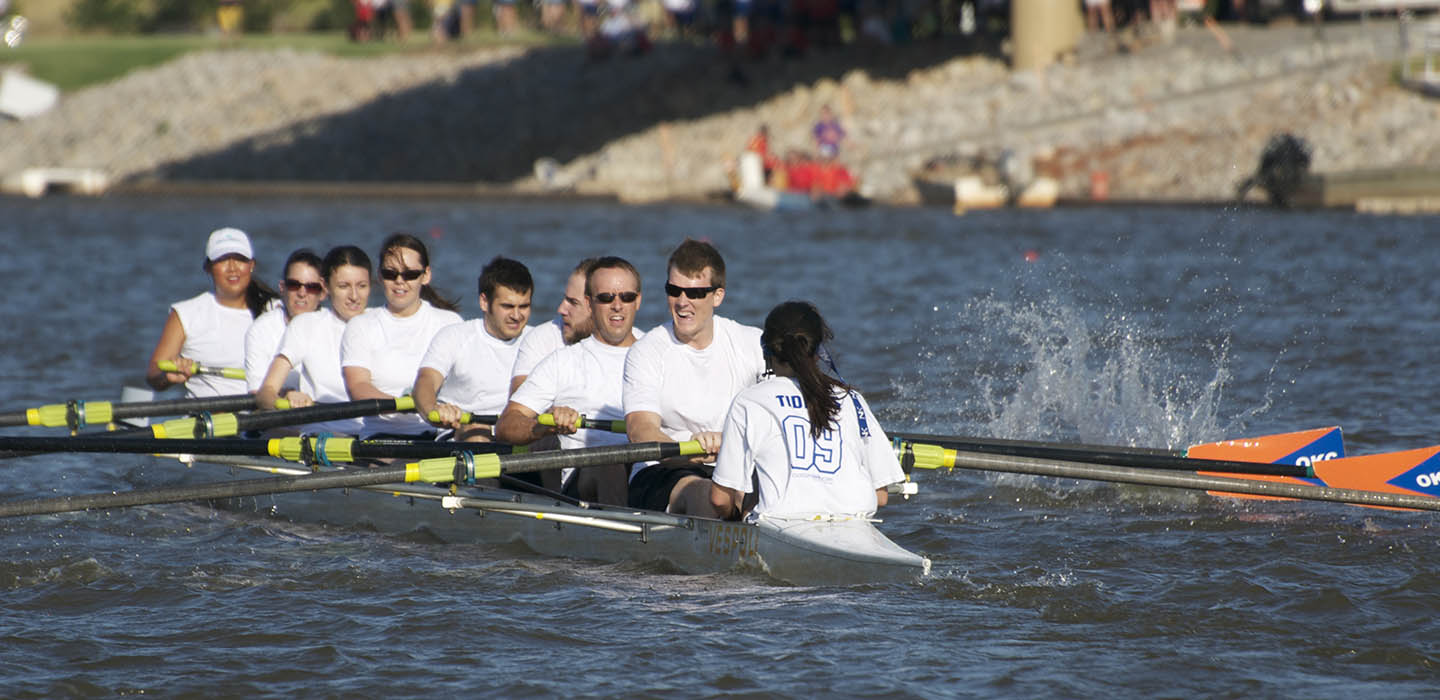
Rowing Terms
Rowing is a sport filled with strange and wonderful terminology. From catching a “crab” to “way enough,” here’s a quick run through some of the more common terms…
Backsplash
Backsplash is the minor splash that can happen when the rower’s oar blade enters the water at a less than optimum angle. Not only is it a sign of inefficient blade work, it gets fellow rowers wet.
Blade
The blade is the flat surface of the oar, usually painted with the team’s colors. Blades are approximately 7 inches across and 24 to 30 inches wide. Chesapeake Boathouse blades are orange and blue.
Bow & Bowball
The bow is the front of a boat – the part that crosses the finish line first. Since rowers are seated facing backward, the bow of the boat is behind them. Look for the ball on the tip of the bow.
Bucket Rigging
The rigging of an eight or a four so that riggers 2 and 3 are on the same side.
Catch
The rowing stroke includes three distinct phases: the catch, the drive and the recovery. At the “catch” the rower’s blades are entering the water.
Check
Check is the slight amount of hesitation you’ll see in the boat as it’s being rowed. The rowers’ forward slide during the recovery interrupts the momentum of the boat. The rowers’ challenge is to slide forward with such control, the boat never checks.
Coxswain
The coxswain is the member of the crew who sits in a small seat either in the bow or the stern. Often abbreviated to “cox,” this person steers the shell and coaches the rowers during a race. A skilled coxswain often means the difference between winning or losing. Coxswains are small, weighing between 110-135 lbs (women) and 120-165 lbs (men). It is traditional for crews to toss their coxswain into the water after winning a race!
Crab
A crab is the term rowers use when the oar blade gets “caught” in the water. It is caused by a momentary flaw in oar technique – and it has happened to anyone who has ever rowed. A crab may be minor, allowing the rower to quickly recover, or it may be so forceful that the rower is ejected from the boat. Often, crews must cease rowing for the rower to regain control of the oar.
Deck
The deck of the boat includes the covered portion of the bow and stern. Double (2x) A double is a two-person sculling shell (each person has two oars). A pair refers to a two-person sweep boat (each person has one oar).
Drive
The rowing stroke includes three distinct phases: the catch, the drive and the recovery. At the catch, the rower’s blades are entering the water. During the drive, the rower “drives” back with his/her legs and pulls the oar through the water, propelling the shell forward.
Feathering
Feathering refers to the position of the oar blades as they are turned parallel to the face of the water to cut down on wind resistance during the recovery portion of the rowing stroke. Feathering too soon, before the blade has cleared the water, can result in a crab.
Finish
The finish is the final part of the rower’s stroke where the blade comes out of the water. “Finish” also refers to the end of a race, or to the way in which a crew completes a race as in “they had a strong finish.”
Footstretcher
The footstretcher is an adjustable bracket in the bottom of the rowing shell. Shoes are attached to the bracket giving the rower a way to secure his/her feet while rowing.
German Rigging
The rigging of an eight so that riggers 4 and 5 are on the same side while the others alternate.
Gunwale (gunnel)
The gunwale is the top edge of the shell around the cockpit – the area where the rowers sit. The riggers are secured to the gunwale with bolts.
Half Pressure
When rowers are rowing at half pressure, they are only pulling half-strength.
Hold Water
“Hold water” is to rowing what brakes are to a car. Rowers square their oar blades in the water to bring the boat to a stop as quickly as possible.
Missing Water
When a rower “misses water,” his/her oar blade isn’t set into the water at an appropriate depth and either partially or completely misses the water.
Oarlock
Mounted at the end of the rigger, the oarlock is a u-shaped swivel that holds the oar in position. The oarlock is the pivot point for the oar.
Port
Port is the left side of the boat when facing the bow. Since rowers are seated facing backward, port is on the rower’s right.
Power 10
When the coxswain calls a Power 10, rowers are to increase the pressure of their stroke; i.e., they pull harder.
Quad (4x)
A quad is a four-person sculling shell (each person has two oars). It’s not to be confused with a “four” which refers to a four-person sweep boat (each person has one oar).
Stroke Rate
The number of strokes per minute.
Recovery
The third phase of the rowing stroke. The rower begins at the catch, pushes through the drive and during the recovery, holds the oar blades out of the water as they slide forward to the catch… and the sequence is repeated.
Rigger
The rigger is the metal bracing attached to the side of the boat that holds the oarlock. The oar passes through the oarlock which acts as a pivot point.
Scull
The term “scull” is the proper term for a sculling oar. It is also commonly used as a noun to refer to a boat, or as a verb referring to the act of rowing with two oars
Seat
Rowers sit on a seat which slides along a rail and are identified by the seat they occupy. The rower closest to the bow (front) of the boat is 1-seat, then 2-seat and so on. The person seated at the stern of the boat is also known as “the stroke” while the rower at the bow of the boat is said to be rowing “bow.”
Shell
Shell is another name for a rowing or sculling boat.
Single (1x)
A single person in a sculling shell (two oars).
Skeg
The skeg is a short fin on the bottom of the shell that helps it maintain a straight course.
Starboard
Starboard is the right side of the boat when facing the bow. Since rowers are seated facing backward, starboard is on the rower’s left.
Stern
The stern is the back end of the boat.
Stroke
“Stroke” can refer to one cycle of the oar. It can also refer to the rower sitting nearest the stern. The “stroke” sets the cadence for the boat; all the other rowers follow his or her lead.
Sweep Rowing
Rowing where each rower has one oar.
Way Enough
“Way enough” is the command to stop rowing. In nautical terms, “way” refers to a boat’s movement through the water. When a boat with oars is pulling alongside another boat – for example to board or shift cargo – at some point the oars must be drawn in. If the oarsmen stop rowing too soon, the boat will stop too far away. The term “way enough” indicates that there is “enough way” (momentum) for the boat to pull alongside and that it’s okay to pull the oars in. Just remember it means to stop rowing.


